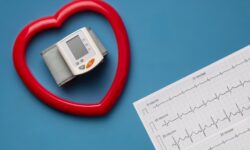Panic Attack Vs Heart Attack: Symptoms and Seeking Treatment

Differentiating between a heart attack and a panic attack is crucial due to the similar symptoms they exhibit but the distinct treatment methods required. Gaining knowledge about the differences between these two conditions can potentially save lives and ensure appropriate medical care.
A heart attack, medically known as a myocardial infarction, occurs when there is a blockage in the blood flow to a specific area of the heart muscle, usually caused by a blood clot. This obstruction can lead to intense chest pain, accompanied by various associated symptoms.
Symptoms of a Heart Attack
While symptoms may vary among individuals, typical signs of a heart attack include:
- Chest discomfort: The predominant occurrence typically occurs in the middle of the chest and persists for more than a brief period. The sensation of unease may come and go and often feels like constriction, tightness, or discomfort;
- Discomfort in other areas: This sensation can manifest in one or both arms, the back, neck, jaw, or abdomen;
- Shortness of breath: This can happen with or without accompanying chest discomfort;
- Other symptoms: Additional symptoms that may arise include sudden perspiration, feelings of nausea, dizziness, or profound exhaustion.
It is important to note that not all individuals experiencing a heart attack will display these symptoms, and the intensity of symptoms can vary.
Key Attributes of a Panic Attack
Panic attacks, in contrast to heart attacks, are sudden episodes characterized by intense fear or unease. They are associated with anxiety disorders and can occur in any situation, including during sleep. Symptoms typically peak within a few minutes and generally subside after 20 to 30 minutes.
Symptoms of a Panic Attack
Common symptoms include:
- Rapid heart rate;
- Sweating;
- Trembling or shaking;
- Shortness of breath or feelings of choking;
- Feeling detached from oneself or reality;
- Chest pain or discomfort;
- Fear of losing control or “going crazy”;
- Fear of dying.
While these symptoms can be distressing, it is important to note that they are not life-threatening. However, their intensity can be so overwhelming that individuals may mistakenly believe they are experiencing a heart attack.
Comparison of Heart Attack and Panic Attack Symptoms
The table below presents a straightforward comparison of the typical symptoms observed in both conditions:
Symptoms Heart Attack Panic Attack Chest Discomfort Yes Yes Rapid Heart Rate Sometimes Yes Sweating Yes Yes Shortness of Breath Yes Yes Nausea Yes Sometimes Feeling of Impending Doom Sometimes Yes Fear of Dying Sometimes Yes Trembling or Shaking No Yes Feeling Detached from Reality No Yes
The information presented in this table clearly indicates a notable convergence of symptoms, which may result in a potential state of perplexity when distinguishing between the two conditions.
Differentiating Factors

When comparing heart attacks and panic attacks, there are several significant factors that can aid in distinguishing between the two conditions. These factors encompass the preceding triggers, the nature and severity of symptoms, and the associated characteristics. Let us delve into these factors:
Physical Exertion and Triggers
- Heart Attacks: Engaging in vigorous physical activities or exercises can serve as a precursor to the manifestation of symptoms. It is not uncommon for a heart attack to be triggered by intense physical exertion;
- Panic Attacks: Panic attacks can manifest spontaneously, devoid of any identifiable triggers. They might even rouse an individual from slumber, without any discernible physical exertion.
Chest Pain and Radiating Symptoms
- Heart Attacks: In cases of heart attacks, chest pain typically exhibits a higher level of severity and intensity. The pain can extend to the arms, jaw, or back. Unlike in other situations, resting or changing positions often does not provide relief from the pain;
- Panic Attacks: In the case of panic attacks, chest pain is typically milder in intensity and of shorter duration. It may be characterized as a sensation of tightness, pressure, or general discomfort. Unlike in heart attacks, the pain experienced during panic attacks does not usually radiate to other parts of the body.
Duration and Symptom Patterns
- Heart Attacks: If a heart attack is left untreated, the symptoms can persist for a prolonged duration and gradually deteriorate over time;
- Panic Attacks: Symptoms of panic attacks usually reach their peak within approximately 10 minutes and then gradually diminish. However, it is important to note that certain symptoms may persist for a longer duration, which can vary from person to person.
Response to Rest and Position
- Heart Attacks: In the case of heart attacks, the chest pain typically does not subside or diminish with rest or changes in position. Regardless of whether one rests or changes positions, the pain tends to persist consistently;
- Panic Attacks: Symptoms of panic attacks frequently lessen or resolve when individuals rest or change their position. Engaging in calming activities can also assist in alleviating these symptoms.
History and Context
- Heart Attacks: People who suffer from a heart attack might not possess any previous records of anxiety or panic ailments;
- Panic Attacks: Panic attacks are commonly linked to a background of anxiety or panic disorders. The person may have encountered similar episodes previously.
Heart attacks and panic attacks can be differentiated based on various factors, including triggers, severity and radiation of chest pain, duration of symptoms, response to rest or position, and the individual’s medical history. These distinguishing factors play a crucial role in accurately identifying and distinguishing between the two conditions, facilitating the appropriate medical intervention and support.
Diagnosis and Treatment
Heart Attacks
- Diagnosis:
- Symptoms: Symptoms such as chest pain or discomfort, shortness of breath, nausea, lightheadedness, and pain or discomfort in the arms, jaw, or back can be indicative of various health conditions;
- Medical history: Previous cardiovascular conditions, risk factors, and a family history of heart disease can significantly contribute to an individual’s susceptibility to heart-related issues;
- Physical examination: Vital signs, abnormal heart sounds, signs of distress;
- Diagnostic tests: Medical professionals may employ various diagnostic procedures to evaluate heart health, including an electrocardiogram (ECG), blood tests to measure cardiac enzymes, and imaging tests such as an echocardiogram, stress test, or cardiac catheterization.
- Symptoms: Symptoms such as chest pain or discomfort, shortness of breath, nausea, lightheadedness, and pain or discomfort in the arms, jaw, or back can be indicative of various health conditions;
- Treatment:
- Medications: Blood clot-dissolving drugs, heart muscle damage-reducing medications, antiplatelet drugs;
- Revascularization procedures: Percutaneous coronary intervention (PCI), coronary artery bypass grafting (CABG);
- Cardiac rehabilitation: Programs for recovery and lifestyle changes.
Panic Attacks
- Diagnosis:
- Symptoms: Sudden intense fear, physical symptoms (rapid heartbeat, sweating, trembling, sense of impending doom);
- Ruling out other causes: Evaluation to exclude underlying medical conditions;
- Psychological history: Assessment of previous episodes, triggers, mental health.
- Treatment:
- Cognitive-behavioral therapy (CBT): Identifying and changing negative thought patterns, developing coping strategies, gradual exposure to reduce anxiety;
- Relaxation techniques: Deep breathing exercises, progressive muscle relaxation, mindfulness meditation;
- Medications: SSRIs, benzodiazepines, beta-blockers (in conjunction with therapy).
Heart attacks and panic attacks require different diagnostic and treatment approaches. Swift medical intervention, including the use of medications and procedures, is crucial for managing heart attacks. On the other hand, panic attacks are predominantly addressed through psychological therapy, and in some cases, medication may be prescribed.
Conclusion
Distinguishing between a heart attack and a panic attack can be a challenging endeavor due to their overlapping symptoms. Therefore, when uncertainty arises, it is vital to prioritize caution and promptly seek medical assistance. When it comes to potential heart issues, it is better to prioritize safety rather than regret later. Fortunately, as our understanding of these conditions continues to advance, we can strive to develop more effective approaches for diagnosis and treatment, thereby enhancing the overall management of individuals experiencing such episodes. By remaining vigilant and promoting advancements in our knowledge, we can strive for better outcomes and a healthier future for those affected.
FAQS
While panic attacks can induce chest pain and produce symptoms that resemble a heart attack, they do not have the capability to directly cause a heart attack. However, the regular occurrence of panic attacks can contribute to the development of heart diseases over time. Prolonged periods of stress and anxiety associated with frequent panic attacks can exert a toll on the cardiovascular system, potentially increasing the risk of heart-related ailments.
Indeed, panic attacks are not considered life-threatening. Nonetheless, they can be highly distressing and significantly disrupt an individual’s quality of life.
If you find yourself encountering what you perceive to be a panic attack for the first time, or if you are uncertain whether the symptoms you are experiencing indicate a panic attack or a heart attack, it is imperative to promptly seek medical attention.
Due to the similarities in symptoms, it is common for individuals to mistakenly confuse a heart attack with a panic attack, and vice versa.








